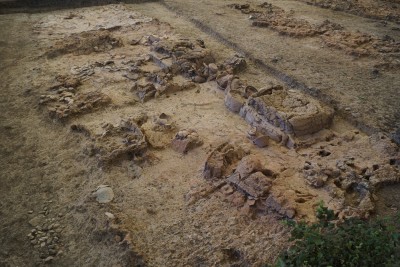Drenovac: a Neolithic settlement in the Middle Morava Valley, Serbia
Abstract

The Late Neolithic houses excavated at Drenovac, Serbia, rank amongst the best-preserved in Europe. In particular, the preservation of collapsed second-storey floors offers unique insights into household and social organisation. The site of Slatina-Turska česma, Drenovac, is located in the Middle Morava Valley of central Serbia (Figure 1). It is a deeply stratified site, with cultural deposits up to 6.5m thick, that spans two main periods of occupation (separated by a hiatus of approximately 700 years): the Early Neolithic Starčevo Culture (6100–5900 BC) and the Late Neolithic Vinča Culture (5300–4700/4500 BC). The site was first recorded in 1966, and the first large-scale excavations undertaken between 1968 and 1971 (Vetnić 1974: 125–39; Perić 2004). In 2004, the Archaeological Institute in Belgrade conducted further excavations to improve understanding of the site's chronology, stratigraphy, formation processes and occupation dynamics (Perić 2009; Perić & Perić 2014). Geomagnetic surveys were carried out in parallel with further excavations undertaken between 2008 and 2011 in cooperation with the Romano–Germanic Commission of the German Archaeological Institute (Perić et al. 2016) and, between 2012 and 2013, with the Viminacium Centre for New Technologies. An extensive geomagnetic survey here offers extraordinary insights into the layout and extent of the Late Neolithic settlement, and has enabled targeted excavations (Figure 1).
Author
- Slaviša Perić
Institute of Archaeology, Kneza Mihaila 35/4, 11000 Belgrade, Serbia (Email: slavisa.r.peric@gmail.com)

 Cite this article
Cite this article